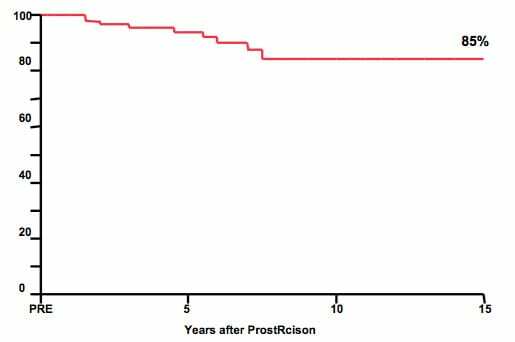Prostate cancer survival rates are estimations used to explain your expected outcome, called your prognosis. Knowing this information can help you better understand how long you may survive after your initial diagnosis and may help you decide which treatment options are best for you.
If you, or somebody you love has recently been diagnosed with prostate cancer, survival rates are likely one of the first things that you will want to understand. Of course, it is equally important to understand the specific risks posed to individuals so that they can detect cancer in the earliest stages.
Prostate cancer detection is closely linked with men’s age. According to the Prostate Cancer Foundation, only 1 in 451 men (.22%) has a prostate diagnosis before the age of 50. This continues to increase as men age. Between 50-59 years of age, the rate increases to 1 in 55 (1.8%), 1 in 20 for ages 60-69 (5%), and 1 in 12 (8.3%) between the ages of 70-79. In fact, almost 60% of all prostate cancer diagnoses occur in men over the age of 65.
Because so many men are diagnosed with prostate cancer later in life, many professionals only worry about the short-term survival rates. The five year prostate cancer survival rate is frequently cited as one of the most important statistics (99% survival rate in prostate cancer when it is detected early). However, for many people, a five year approach seems short-sighted, and you may wish to know your long-term prognosis. For these individuals, we thought it was important to look at a 15-year prostate cancer survival rate.
The 15-year individual cure rate refers to the calculations we use based on thousands of men treated at RCOG. We determine this calculation based on a combination of Gleason Score, PSA, stage and their current risk group: low, medium, or high. By using your particular information, we can calculate from our database your individual cure rate.
While most medical journals publish an overall risk group (which can be helpful by providing a general understanding of your chances of reaching a zero PSA level), this is not the most accurate representation when it comes to each case of prostate cancer. To understand your individual chance of reaching a zero PSA, you must rely on your personal medical information.
While trying to calculate your own prostate cancer survival rate is very important for every individual, you should work with your doctor to understand the specifics of your case. However, we find that giving our patients some background knowledge helps them come to their appointment with a better understanding of their individual cure rate.
Let’s use an example patient in order to understand the 15-year individual cure rate calculation. We use patient Bill Smith’s Gleason Score, PSA levels, and stage to calculate his 15-year individual cure rate and determine that he is at 85%. This means that if we treated 100 men who had prostate cancer just like his, 85 of them would have a zero PSA 15 years after treatment with our dual radiation program, and 15 men (the remaining 15% of the total population) would have a detectable PSA, which means a PSA of more than 0.2 within 15 years. These 15 men would have what is called recurrent prostate cancer.

Different medical professionals have different definitions for when your prostate cancer is “cured”. If you seek multiple opinions, it is very likely that you will hear a variety of different levels or terms for discussing a cure or cancer remission. It is important to understand how your medical team defines this specific language so that you have a complete knowledge of your condition.
Additionally, doctors don’t all agree on the specific PSA level needed to show cure. While we believe you need a zero PSA to show that a condition is cured, many doctors refuse to accept this and say that the PSA level can go to any level after treatment and that you are still “cured”. This is why it is incredibly important when talking to doctors that you avoid using the terms cure or cure rate. Instead, it is important to ask about (and understand) your chance of reaching a PSA level of 0 at 15 years following your treatment.
If you or a loved one has a prostate cancer diagnosis, learn more about the treatment options and their success rates in our free guide.

Make an informed prostate cancer treatment decision. Our 40-page, comprehensive guidebook provides answers to our most frequently asked questions from men diagnosed with prostate cancer, and compares various treatment methods, cure rates and side effects. Our team can also connect you with one of our oncologists at no cost.
Quickly and efficiently build the materials you need to support your inbound marketing strategy. Drag and drop building blocks including testimonials, forms, calls-to-action, and more.